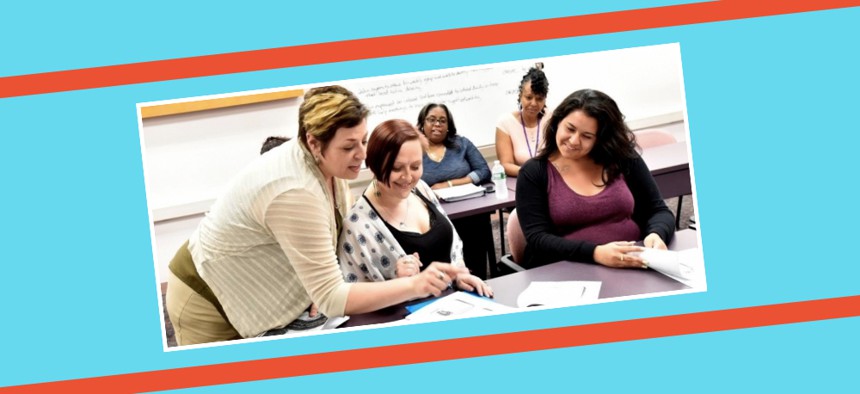My nonprofit career in New York taught me to walk in two different worlds
Health and behavioral healthcare nonprofits have to provide care and meet increasing demands from licensing, regulatory and other oversight systems.

Outreach programming in action Outreach
I come from a generation of founders of mission-driven organizations who didn’t think about being CEOs – they were driven by a sense of purpose. Identifying the gaps in treatment services in the community and creating resources to address those gaps was completely new territory, but it is something that has remained my constant passion.
In 1974, my first job after college was at a youth services agency located in South Ozone Park, Queens, where I helped adolescents develop vocational goals and assisted with placing them into jobs in the community. I eventually transitioned to working as a drug education specialist for the New York City Board of Education in a middle school in Ozone Park, Queens. During this time, neighborhoods across New York City were experiencing a drug epidemic. The average age of drug users was declining as increasing numbers of children experimented with and became addicted to various kinds of drugs.
There were few resources for youth and families with substance abuse problems and no residential treatment facilities for young adolescents so a group of concerned community members joined me in paving a course for something to be done. A dilapidated tenement building was purchased to design a residential treatment model for 12-to-17-year old youth. This building became Outreach House I, the first program in New York state to treat adolescents under the age of 16. At the same time, an assessment and referral center was created to encourage people in need to seek treatment for substance abuse and connect them with appropriate levels of care. With a start-up grant of $60,000, Outreach opened its very first facility in January 1980. I could never have envisioned then what Outreach would become.
"In an age that prioritizes efficiency and cost-efficiency, we walk with one foot in the world of providing meaningful care and meeting the needs of communities and families – and the other foot in a world of increasing demands from licensing, regulatory and other oversight systems."
Outreach has been able to thrive because of our staff, leadership, directors, and other partners over the years. Numerous like-minded people have joined us over the decades, beginning with our first board of directors, and many, many other dedicated supporters in the years since. Our mission expanded and Outreach evolved into one of the largest and most respected substance abuse treatment and training organizations in New York.
We brought groundbreaking care to countless adolescents, families, women with children, adults and aspiring healthcare professionals. We developed a training institute that emerged as the largest Credentialed Alcoholism and Substance Abuse Counselor training program in the state. We offered our special care and education to individuals, families, diverse populations and communities who have typically fallen through the cracks of our systems of care. We built healthy lives. And we are still growing – I could not be more proud.
Meanwhile, the nonprofit sector has slowly, but significantly, evolved in the past four decades. Nonprofit programs, especially those dedicated to the provision of health and behavioral health care, are encountering a field that is becoming increasingly more complex.
In an age that prioritizes efficiency and cost-efficiency, we walk with one foot in the world of providing meaningful care and meeting the needs of communities and families – and the other foot in a world of increasing demands from licensing, regulatory and other oversight systems. These demands can be challenging for smaller organizations to manage. While they are important and align with the mission of helping people, more resources are needed to be able to meet these requirements.
I believe Outreach was able to grow into the organization it is today because we remained true to our original mission, while also thinking creatively and out of the box. In the late 1970s and early 1980s, most of our time was spent on creation – we were able to take risks to help develop the sector. Today, new nonprofits have to focus on navigating a myriad of systems within the sector just to thrive.
In spite of these changes, I believe the work of nonprofits is as important, if not more, than it was decades ago.
Today, our generation confronts a significant opioid epidemic. Our task as nonprofit organizations in the healthcare field is to persevere in sustaining and growing meaningful resources to address this crisis. In light of this, as I take my retirement after almost 40 years of service, my advice for the nonprofit workforce remains as fundamental as it has always been: Follow your passion in any field you work in. Be persistent. All they can say is no. Always be willing to learn. It is from some of the most difficult challenges that I have learned the most.
Lastly, find like-minded people who have a wide array of talents and share your passion.
